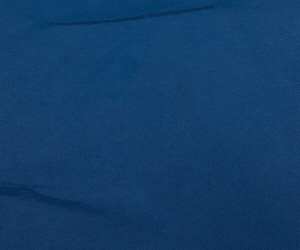Europe was investigating leaks in two Russian gas pipelines that churned up the Baltic Sea with bubbles on Tuesday and raised concerns from Copenhagen to Moscow about sabotage on infrastructure at the heart of a European energy standoff.
But it remained far from clear who might be behind any foul play, if proven, on the Nord Stream pipelines that Russia with European partners spent billions of dollars building.
Poland’s prime minister blamed sabotage, without citing evidence, and the Danish premier said it could not be ruled out.

Russia, which has slashed gas deliveries to Europe after the West imposed sanctions, said sabotage was a possibility and the incident undermined the continent’s energy security. A senior Ukrainian official called it a Russian attack to destabilise Europe, without giving proof.
The Nord Stream pipelines have been flashpoints in an escalating energy war between European capitals and Moscow that has pummelled major Western economies, sent gas prices soaring and sparked a hunt for alternative energy supplies.
Sweden’s Maritime Authority issued a warning about two leaks in the Nord Stream 1 pipeline, the day after a leak on the nearby Nord Stream 2 pipeline was discovered that prompted Denmark to restrict shipping and impose a small no fly zone.
Denmark’s armed forces released a video showing bubbles boiling up to the surface of the sea. The largest gas leak had caused a surface disturbance of well over 1 km (0.6 mile) in diameter, the armed forces said.
“Today we faced an act of sabotage, we don’t know all the details of what happened, but we see clearly that it’s an act of sabotage, related to the next step of escalation of the situation in Ukraine,” Polish Prime Minister Mateusz Morawiecki said at the opening of a new pipeline between Norway and Poland.
European leaders and Moscow say they can not rule out sabotage.
The leaks were very large and it could take perhaps a week for gas to stop draining out of the Nord Stream 2 pipeline, the head of Denmark’s Energy Agency Kristoffer Bottzauw said.
Ships could lose buoyancy if they entered the area.
“The sea surface is full of methane, which means there is an increased risk of explosions in the area,” Bottzauw said.
Danish Prime Minister Mette Frederiksen said sabotage could not be ruled out. “We are talking about three leaks with some distance between them, and that’s why it is hard to imagine that it is a coincidence,” she said.
Kremlin spokesperson Dmitry Peskov called it “very concerning news. Indeed, we are talking about some damage of an unclear nature to the pipeline in Denmark’s economic zone.” He said it affected the continent’s energy security.
Neither pipeline was pumping gas to Europe at the time the leaks were found amid the dispute over the war in Ukraine, but the incidents will scupper any remaining expectations that Europe could receive gas via Nord Stream 1 before winter.
Operator Nord Stream said the damage was “unprecedented”.
Both pipelines contained gas although they were not in operation.
Gazprom, the Kremlin-controlled company with a monopoly on Russian gas exports by pipeline, declined to comment.
“There are some indications that it is deliberate damage,” said a European security source, while adding it was still too early to draw conclusions. “You have to ask: Who would profit?”
Russia reduced gas supplies to Europe via Nord Stream 1 before suspending flows altogether in August, blaming Western sanctions for causing technical difficulties. European politicians say that was a pretext to stop supplying gas.
The new Nord Stream 2 pipeline had yet to enter commercial operations. The plan to use it to supply gas was scrapped by Germany days before Russia sent troops into Ukraine in February.
“The multiple undersea leaks mean neither pipeline will likely deliver any gas to the EU over the coming winter, irrespective of political developments in the Ukraine war,” Eurasia Group wrote.
European gas prices rose on the news. The benchmark October Dutch price climbed almost 10% on Tuesday. Prices are still below this year’s stratospheric peaks but remain more than 200% higher than in early September 2021.
The leaks happened before Tuesday’s ceremonial launch of the Baltic Pipe carrying gas from Norway to Poland. A centrepiece of Warsaw’s efforts to diversify from Russian supplies, it crosses the Nord Stream infrastructure.
Norway’s Petroleum Safety Authority (PSA) had urged oil companies on Monday to be vigilant about unidentified drones seen flying near Norwegian offshore oil and gas platforms, warning of possible attacks. read more
The Swedish Maritime Administration (SMA) said two leaks on Nord Stream 1 – one in the Swedish economic zone and another in the Danish zone – were northeast of the Danish island Bornholm.
“We are keeping extra watch to make sure no ship comes too close to the site,” a SMA spokesperson said.
The Danish authorities asked that the level of preparedness in Denmark’s power and gas sector be raised after the leaks, a step that would require heightened safety procedures for power installations and facilities.







